Home » Structured Literacy in Kindergarten
Posted by:
Categories
Date
The buzz is big right now in how we are slowly transforming and rethinking literacy in the classroom.
With excitement comes uncertainty. We test theories, we make professional judgments, we find success and we fail.
Questions swirl as we research and reflect:
How much is too much?
How long can lessons be?
Can this learning take place in whole group?
Should it be small group?
What about those that already get it?
What about those who aren’t ready?
Our journey with structured literacy has been over the past 3 years. It has been slow and messy. I think that’s important. It is critical to understand why and what you are doing what you are doing for the students in your care.
What we have worked towards and settled on in our classroom currently isn’t perfect. It’s what works for us and our students (this year). Our structure has come from finessing and refining how we teach and approach.
We want to share a bit about where it fits into our day and a little bit about what it looks like.
Currently, we use a mix of programs, research and professional learning to drive our instruction. We use Heggerty (Pre K and Kindergarten), a sound wall from Tools for Reading, the UFLI document, and a lot of examples from one of our mentors Emily Moorhead.
We have a Structured Literacy block from 10:30-11am in our day. This includes transition to and from the learning. This block of time allows for whole group instruction using the programs and our professional adjustments.
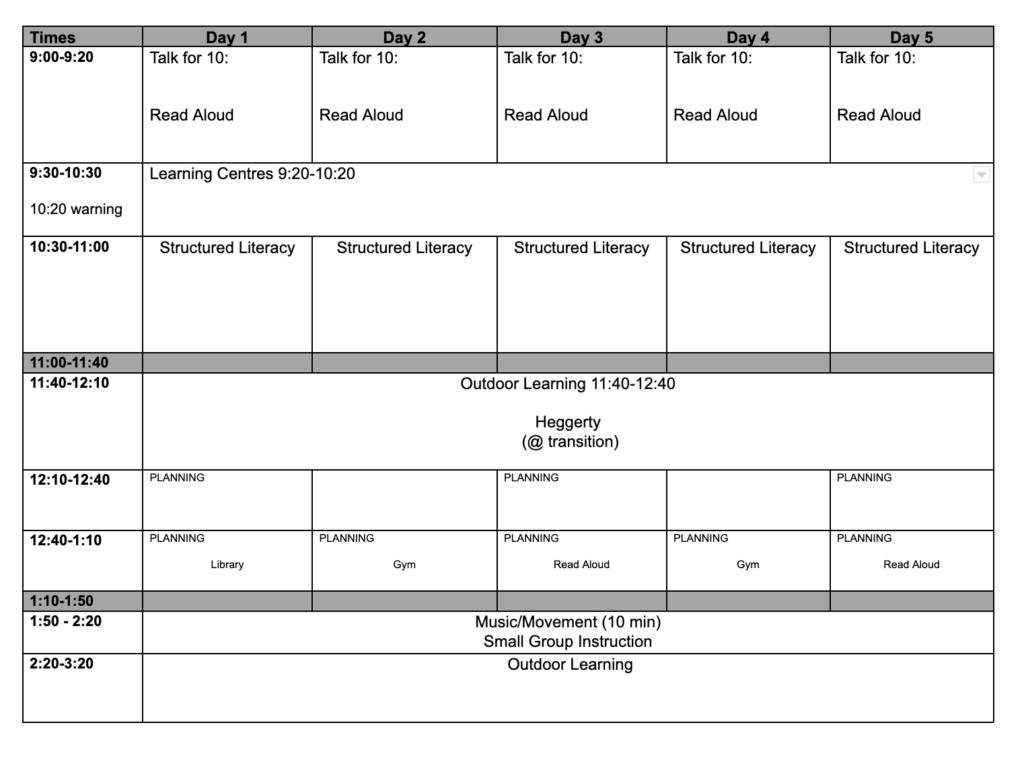
Practice the Code (2 min)
The students say all of the sounds we have learned using code cards. We encourage children to notice when sounds are stop sounds or continuant (e.g., not saying t-t-t-t-t because it is a stop sound, just say t).

Blend and Segment (3 min)
Focusing on Phonemic Awareness we use this section from the UFLI document to blend and segment the words from the lesson.
New Sound (5 min)
Using Tools 4 Reading and UFLI document, we introduce the new sound for the day (we don’t do this every day – usually 2-3 a week depending on students retention and progress).
Blending with Code (5 min)
This section varies depending on the time of year and what children need. We may practice a word chain from the UFLI lesson, we may practice blending 2 or 3 sounds using code cards (see photo example for blending activities – rollercoaster, apartment).

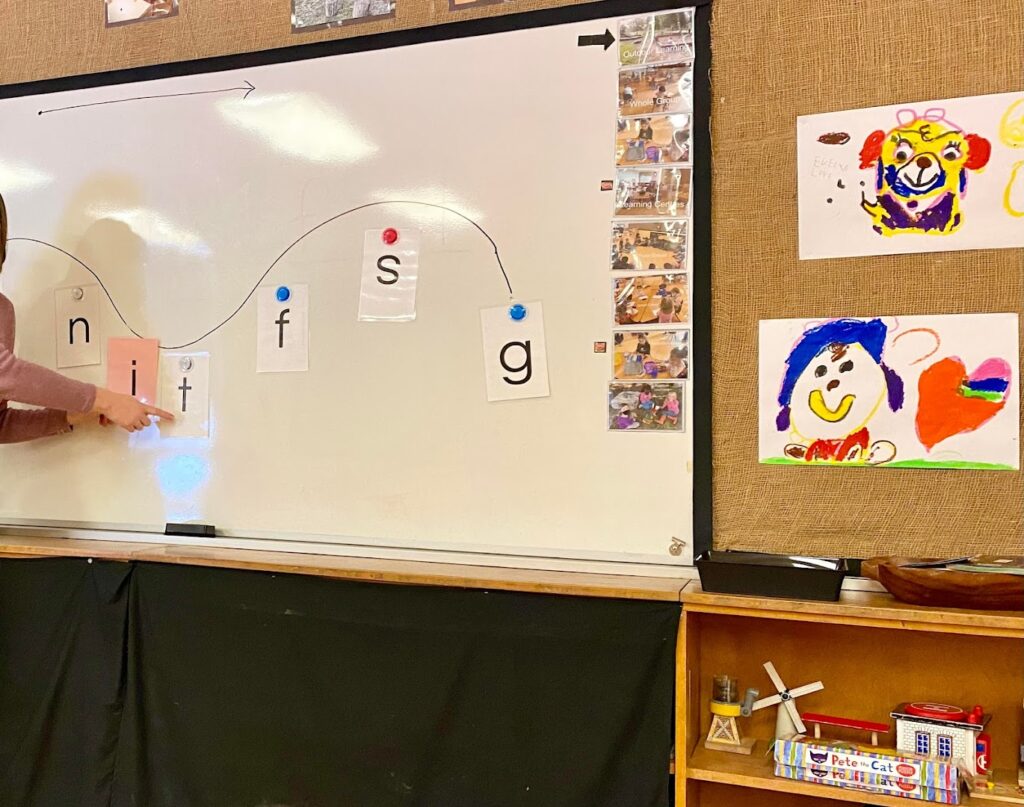
Writing with Code (5 min)
During this portion of lesson the children will use their whiteboards to practice printing and/or spelling the code. When introducing new sounds we embed a short printing lesson. We will usually ask students to spell 3-5 sounds and then a word. We use words from the UFLI lesson to ensure we have learned all the code.
Practice and Transition (10 min)
We spend the last 10 minutes of the block just practicing on whiteboards. Children can draw or write. As educators we will float around and practice blending, printing etc. We also slowly transition at this time to lunch.
Once or twice a week we will use journals and children do some drawing and writing at this time. We usually do this on a day where we are not introducing a new sound so that we have longer to draw and write!
Sometimes during this “practice” block, one educator will engage in a small group for 10 minutes, while the other educator supports children on their whiteboards. We also integrate some literacy small groups during our Small Group instruction block later in the day.
This literacy block changes every couple of weeks – usually just in content but there are many ways we modify! For example, maybe we split into 2 groups for a couple of weeks to differentiate practice. Or, we might play a game instead of practicing on whiteboards.
The most important piece here is that you continue to monitor your students progress, needs, and engagement. We keep a similar structure which makes it predictable and familiar but we can adjust little pieces to support learning.
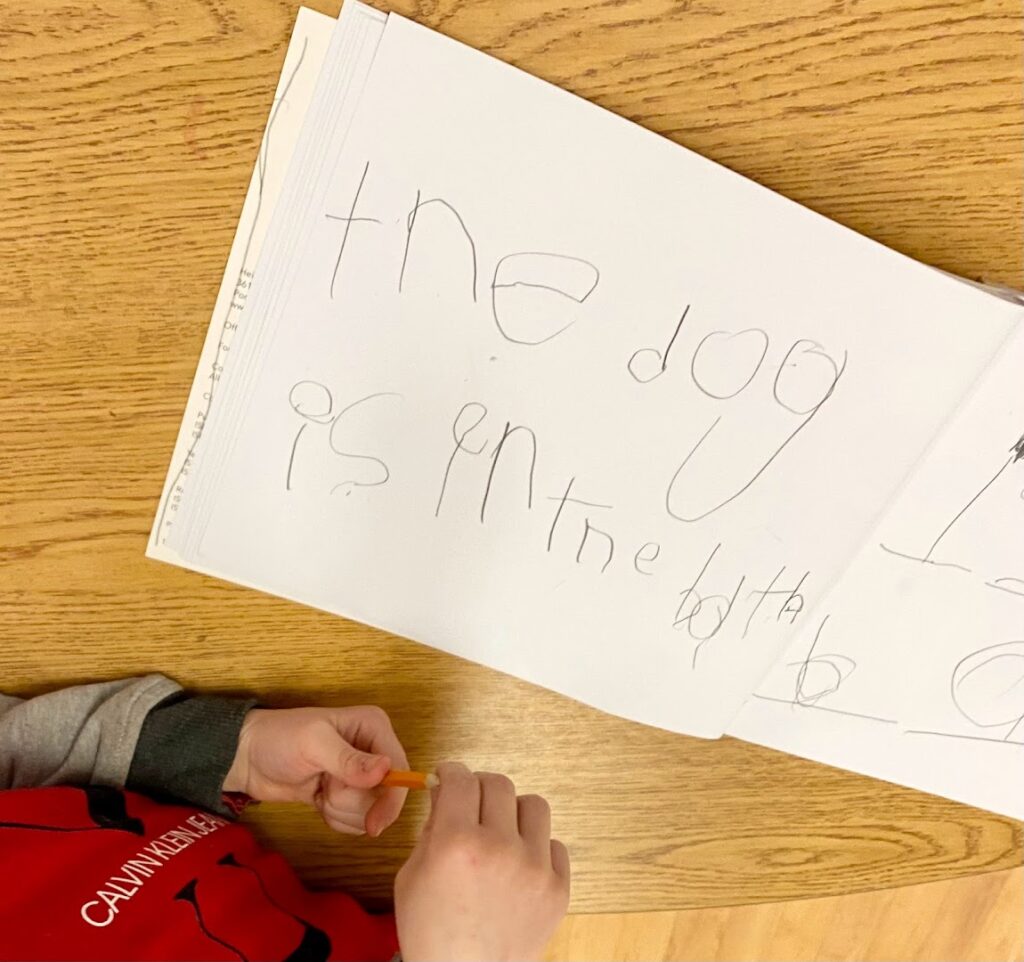
How do we know where children are at?
When to move forward? When to slow down?
We use a few different assessments and screeners to support us. As school boards grow and test out different assessments these may become more streamlined, but for now we have found that quick and simple check-ins help us to better plan and support our children.
In the Fall, we do the BPST assessment (just the letter/sound component). Essentially, we want to see what children know. We also do a simple Phonological Awareness screener that we developed to check in on (rhyming, syllables, beginning/ending sounds, counting words).
BPST Assessment: https://www.santapaulausd.org/cms/lib2/CA01001761/Centricity/Domain/51/Basic%20Phonic%20Skills%20Test%20-%20BPST%20-%20III.pdf: Structured Literacy in KindergartenOnce we get into doing our Scope and Sequence from UFLI, we begin to do a “check in” every 2-3 weeks. All we do is use the code cards that the children have learned already and check in with the children. They read the cards, we quickly mark off which sounds they have and which they are still working on. It takes 2-3 minutes per student. This helps us to monitor progress and determine needs for small group instruction.
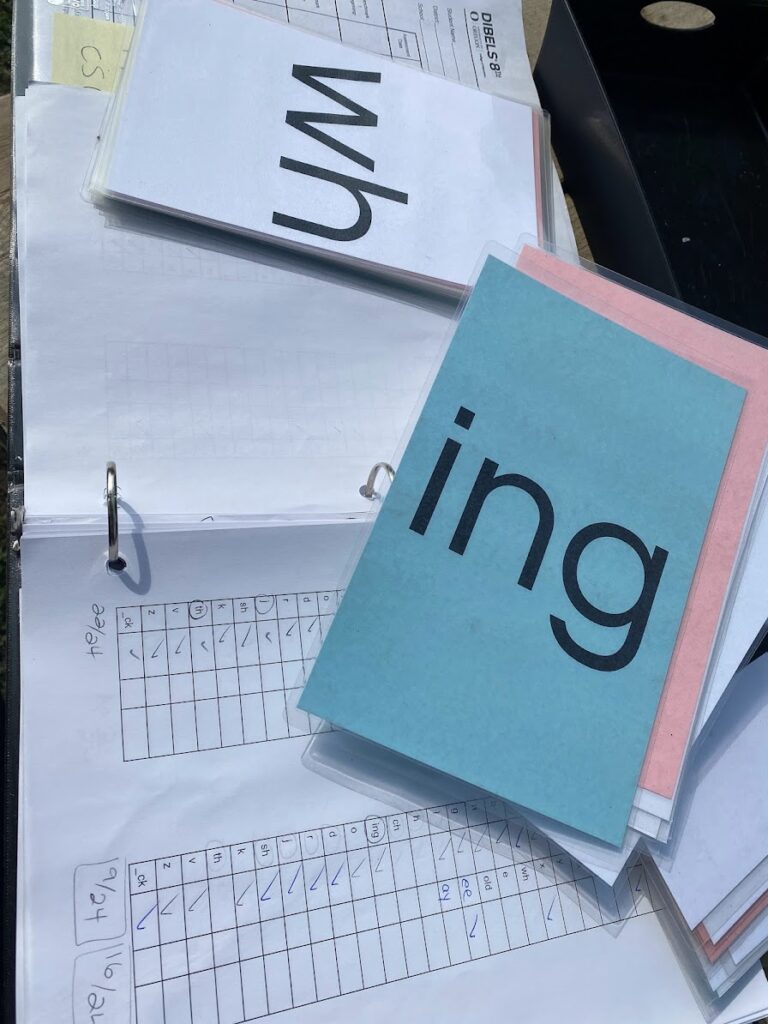
Once we get through the Scope and Sequence for Kindergarten (essentially consonants, short vowels), we will try the second section of the BPST to see how children are doing with the concept of blending.
When you look at Scarborough’s Reading Rope it is clear that Phonological Awareness and Phonics is only one component. It takes up a little part of our day and at first we struggled with where the other components fit.
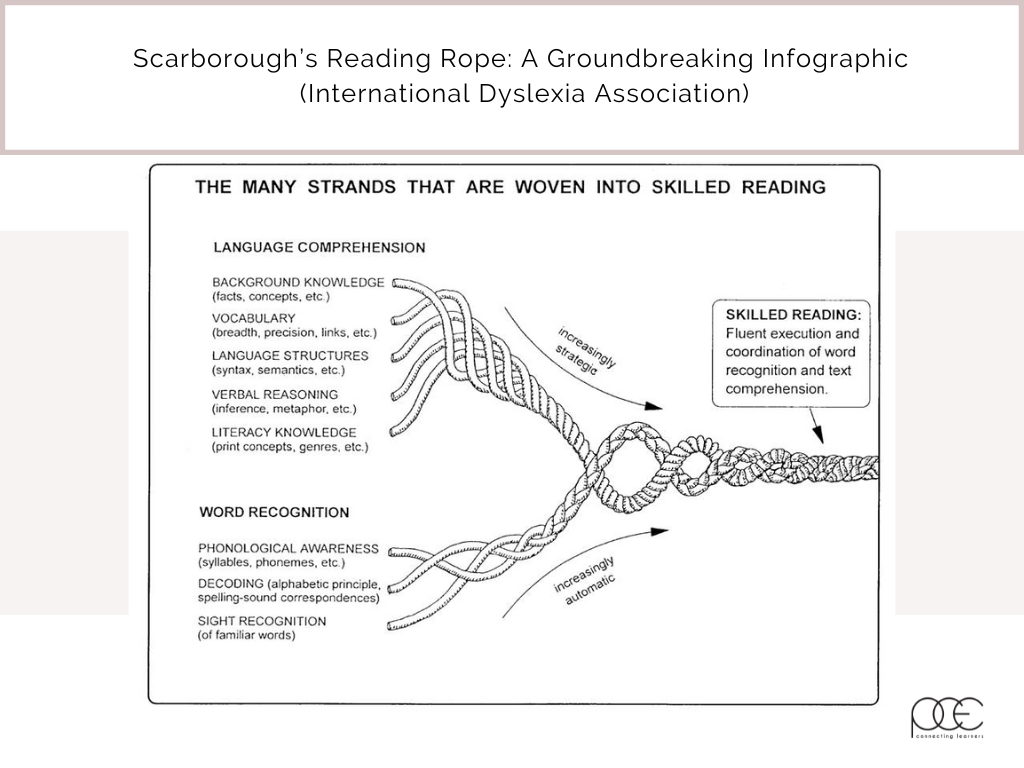
We begin our day with a focus on Oral Language and Vocabulary development. We follow a simple program called Talk for 10, but you can integrate oral language development in many ways. For example, on Wednesdays we do “What’s Wrong Wednesday”. We will usually show a Spot the Difference picture and encourage children to notice and discuss what is different.
We also do a short read aloud every morning before Learning Centres. We have been focusing on rich vocabulary during this book and have found the resource Ramped Up Read Aloud a great starting point for finding some new books with simple lesson ideas! We continue to focus on Tier 2 vocabulary (words like: fright, crumple), instead of Tier 1 (cat, cow) or Tier 3 (amphibian, biodiversity).
We build small pieces of Heggerty into our transitions each day. We do not sit and do the full Heggerty lesson because we have found that it is too much for some of our students to stay focused and engaged. We do find that breaking it up through the day during transitions to be helpful! We have also noticed that some components (e.g., blending and segmenting) can be skipped over when we are engaging with them in our UFLI lesson. This approach is again a reminder that we are professionals that have to know our children, their needs, and what our goals are. We know many educators who do the full Heggerty lesson daily and find that to be successful too!
We will share MORE about this in another post, but we do use some decodable readers for children who are ready for them. We provide so many opportunities for children to engage in blending and reading simple words during our lessons that we do not put a huge emphasis on rushing children to read little books.
We have a beautiful book centre in our classroom (where we add many of the books we have read aloud) and the children have many opportunities throughout the day to engage with different types of books during play and whole group instruction.
During small group instruction, we also READ often using small strips that we created from the UFLI scope and sequence. We will use cause and effect games to engage the children and they take turns practicing how to decode simple words or phrases one at a time. This can be just as (if not more) effective in practicing reading for the youngest learners in our room. If they can become efficient at decoding it makes it easier for them to transfer those skills into a book.
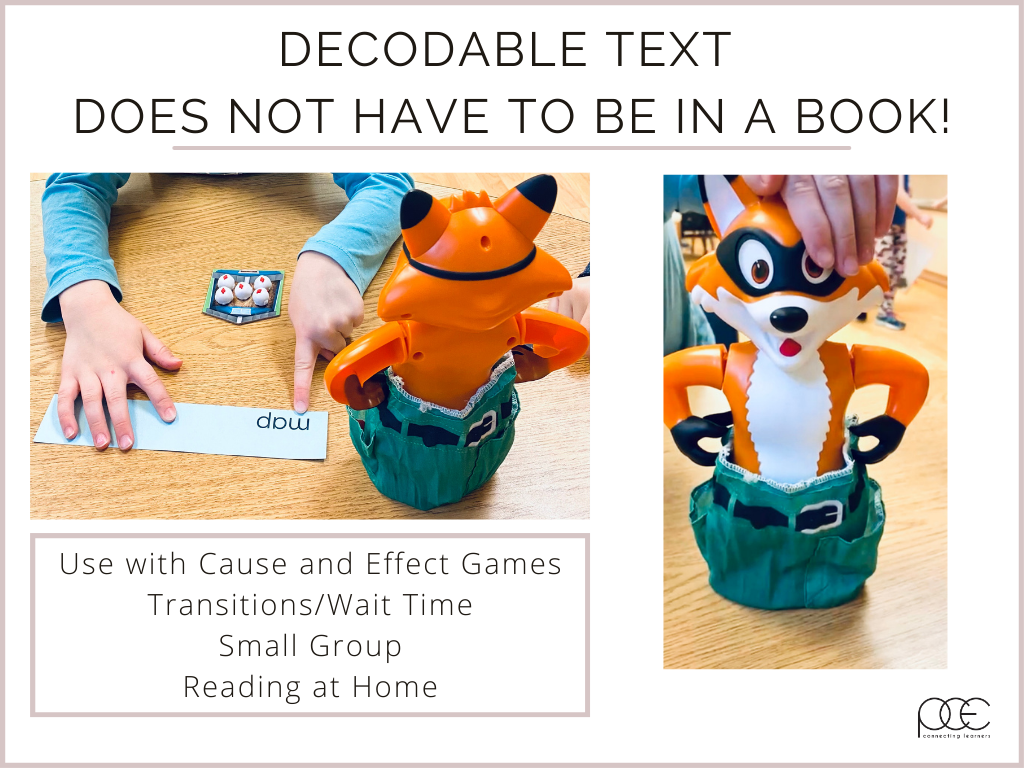
I think a really, really important piece to add in here is that play is still our vehicle for learning. We value and facilitate rich play experiences throughout our day. Our children have just over an hour of uninterrupted play in the morning, over an hour of uninterrupted play in the middle of the day outdoors, and an hour of uninterrupted play outdoors at the end of the day.
Uninterrupted means that the children are making their own decisions. They are choosing where, who and what to engage with. We are NOT pulling them for small groups. As educators during this time we are setting the stage for their learning, documenting what we are noticing, playing alongside them, modelling and integrating language into their play.
There is a misconception that having a whole group structured literacy block means that we are not valuing play, but that isn’t the case at all. Our focus and learning in that literacy block allows for children to use those learned skills to read and write in the context of their play. They are more confident when wanting to make signs, write stories, make lists, or add their name onto their work.
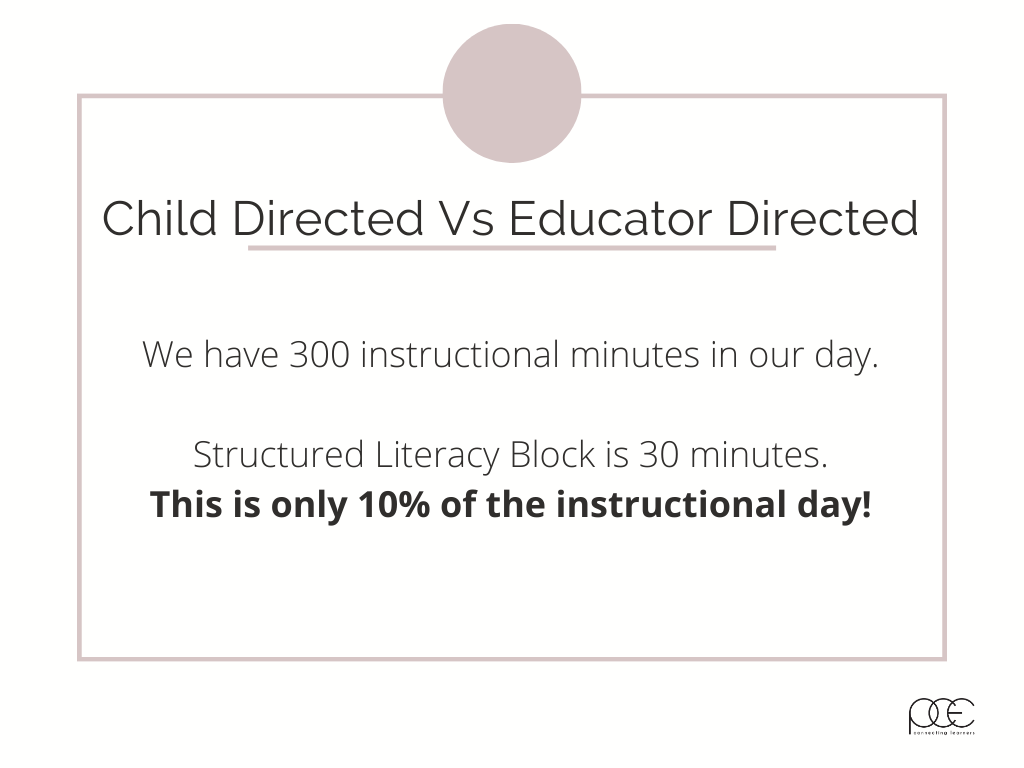
Balance and professional reflection is at the core of everything that we do as professionals. Make decisions about how and what works for your students, take the time to engage in professional conversations with colleagues, engage in opportunities to grow through PD.
Even though these past three years have been filled with things that have worked well, things that have needed to be tweaked, and things that we have completely “rethought”… the process WORKS! We have seen SIGNIFICANT growth in our students.
They are learning, growing and retaining more than we have ever seen before. This journey has been PURE magic. We have found a renewed excitement for our own teaching, learning and growth. The bottom line… It works.
IDA Ontario: lots of incredible links, courses, webinars available https://www.idaontario.com/
UFLI: variety of free and downloadable resources and articles https://ufli.education.ufl.edu/
PCE Membership Program: We have been sharing lots of information about Structured Literacy through the webinars in our Membership Program. Educators get access to over 40 webinars (essentially mini courses) on a variety of topics to meet their professional learning needs. For more information check out this link: https://passionatelycuriouseducators.com/professional-development/pce-membership/
Sign up for our mailing list if you would like to stay connected, learn about new ideas that can be implemented in your classroom, get access to exclusive material and offers.
We respect your privacy.
Copyright 2019 – PCE Connecting Learners. | Designed & Developed by BrandCo House.
